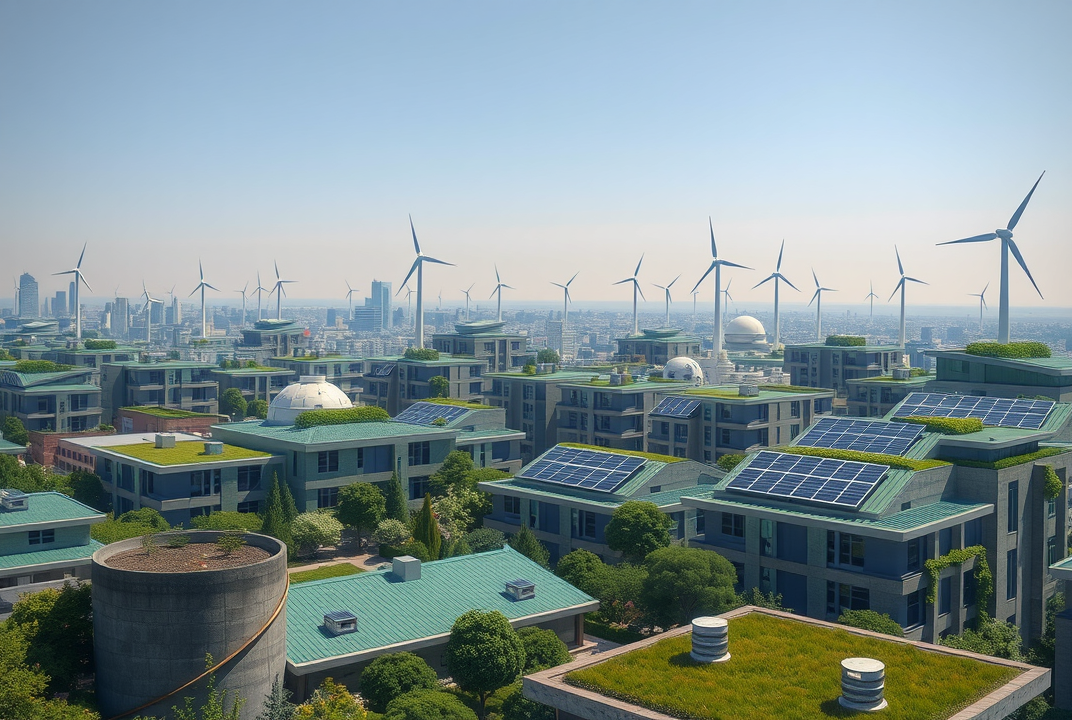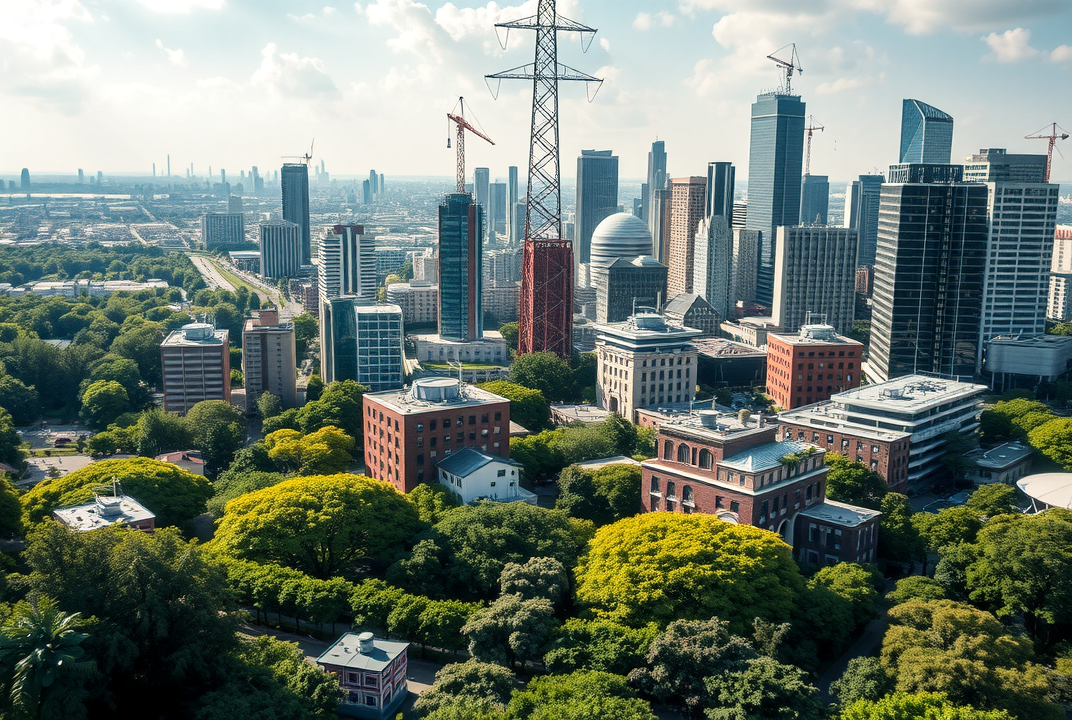Modernizing Infrastructure for a Green Future: Building Sustainable Bridges Today

Introduction
Did you know that nearly half of the globe’s energy consumption stems from infrastructure, including buildings, bridges, and roads? That’s a staggering amount! As urban dwellers, what does this mean for our future? It signifies a pressing need to alter how our cities run. Updating infrastructure for the environment is not just the future—it's the immediate need. In this article, we'll uncover what creating a green infrastructure means and how it affects all of us.

Infrastructure doesn’t sound very exciting, I know. But here’s the twist; think of cities as intricate puzzles with energy-efficient pieces driving them towards green growth. We will dig into topics like harnessing green technologies, new approaches to urban development, and how these pave the way for a lesser carbon footprint.
The Need for Modern Infrastructure
So, why is there a need to modernize? Why throw out the old manuals and start afresh? Well, our traditional cities sprouted during a time with different environmental challenges. Presently, cities face pollution and climate change affects more directly than ever. Building eco-driven roads, bridges, and public services isn’t just beneficial; it’s crucial!
Modern Issues: Pollution and Climate Change
Our highways and byways have long been built for convenience over consciousness. Pollution stands the test of time as a challenge for urban planners. Climate change threatens the very foundations of infrastructure today by causing harsh weather conditions that our traditional designs can’t withstand.
City Life and Infrastructure Impact
City lifestyle is glued intricately with infrastructure. From the energy powering our homes to the tunnels and streets that connect them—all of these contribute to the day-to-day existence and long-term sustainability.
Components of Green Infrastructure
Envision a smart city. Yeah, that’s what we’re heading towards! Everything working in harmony to enable less energy use and maximum sustainability. Various pieces make up this jigsaw.
Energy-Efficient Buildings
Buildings are like the giant Lego blocks of any city. Developing structures with energy-saving features is a giant stride. Smart cooling and heating, energy-efficient lighting, and using materials that are both sturdy and green are stepping stones in the path.
Insulation and Natural Materials
Forming walls with natural resources and enhanced insulation materials reduce energy needed for temperature control within buildings. Not to mention, these also grant aesthetic perks.
Sustainable Transport Systems
Imagine hopping onto a tram powered by renewable energy. We are skating towards replacing pollution-heavy vehicles with public transport that breathes clean into the eco-world.
Public Transport and Bicycle Lanes
Modern infrastructure emphasizes cycling trails and efficiently planned public transit. Encouraging more feet and fewer wheels on the roads results in decreased emissions.
Water Management Systems
A city's thirst can’t be sated without developing intelligent water systems. Managing waste and water supply smartly reduces environmental impacts majorly.
Recycling and Reuse
Ever wondered where the water goes after flushing? Creating systems that recycle and purify wastewater is paramount for preserving this precious resource.
Renewable Energy as Infrastructure’s Backbone
The Earth’s natural gifts! Things like the sun, wind, and water have always been there like loyal old friends. But have you wondered just how they help shape greener cities?
Solar Power and Wind Turbines
Solar isn’t just about panels tucked away inconspicuously. Picture sprawling parks with solar panels generating not just dance with the Earth but power the neighborhood. Wind turbines might look like they’ve got their heads in the clouds, but they work tirelessly to churn out power minus pollutants.
Community-driven Energy Projects
Communities harnessing joint energy ventures—like solar co-ops—enhance local power use. This isn't just relying on one form but blending sun and wind into a mix that powers without harm.
The Role of Sustainable Urban Planning
Urbanization continues as humans head to cities, meaning our metropolis need to fill new shoes sustainably. Planners today wear many hats, becoming eco-warriors guiding cities.
Eco-Friendly Building Codes
Stringent building codes hinge on eco strategies. Urban centers adopting codes encouraging renewable materials and discouraging plastics become lighthouses in sustainable development.
Green Spaces
Who could resist a stroll in a park? Integrating parks and green spaces ensures residents breathe happier and homes remain less heating and cooling reliant.
Technology’s Hand in the Sustainable City Puzzle
Say hello to tech—our trusty sidekick! Gadgets and systems doing more than our ancestors ever dreamt, shaping infrastructure ready for tomorrow.
Smart Grids and Electric Vehicles
Grids monitor use closely, all while co-working with electric transport for balanced energy flows. Picture your car sparkling on the drive, sipping from the energy pool without guilt.
Internet of Things (IoT) in Urban Living
Infrastructures spiced with IoT, meaning every device chats with another, ensuring seamless, energy-cheap communication and operation.
Case Studies: Cities Paving the Way
Examples are key. Some cities model green acting roles exceptionally well.
Copenhagen: The Bicycle Capital
Copenhagen’s biking culture blossoms with roads dedicated to clean wheels. Think of breathable air and a healthier populace, unchained from vehicular emissions.
Singapore and Its Green Oasis
Singapore’s Gardens by the Bay sports both beauty and function. A testament to how urban planners weave aesthetics into functionality efficiently.
The Enchanting Wind Turbines of Texas
Never would you have suspected, Texas’ blend of tradition meets innovation with towers extracting energy through gusty prowess.
Conclusions and Looking Ahead
Bridging here to a green tomorrow isn’t merely artists' designs; it’s today’s task. Recapping: Hassle-free cities flowing with wind, tech, shared energy schemes, and smart rules shape a sustainable world."

